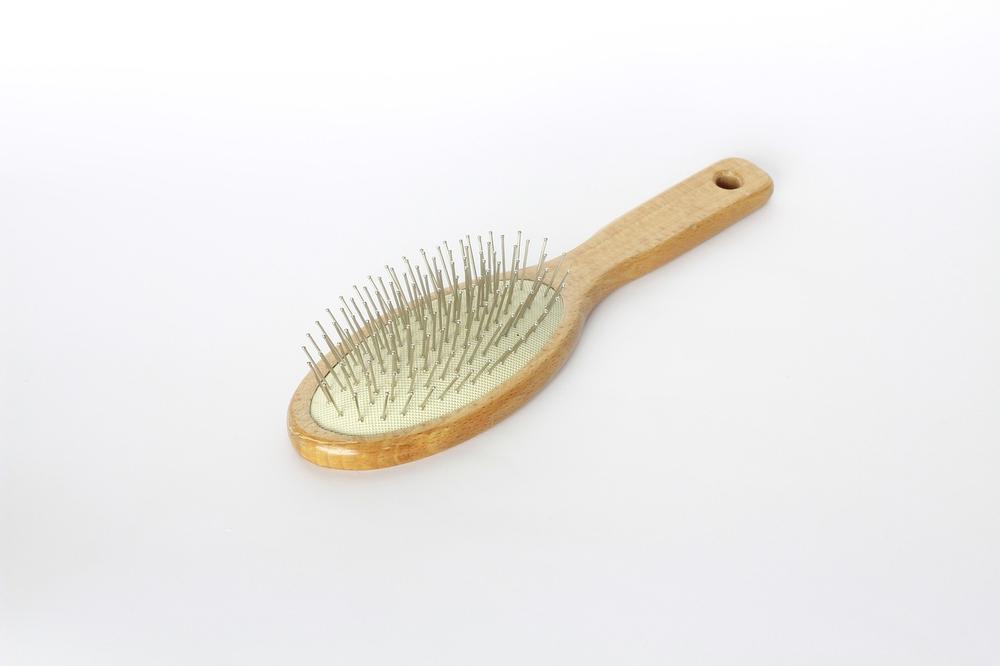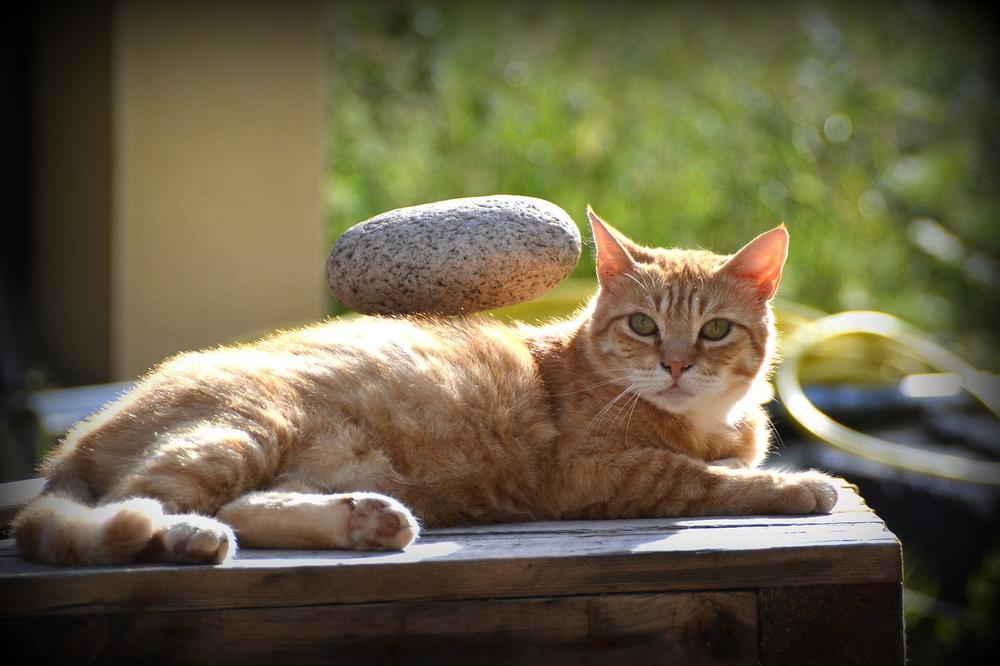Fleas on Cats: Proven Methods for Prevention and Treatment

Tired of watching your poor kitty scratch and suffer?
Can't shake the nagging feeling that those fleas are ruining their cozy, happy lives? 😖
Don't you wish there was a way to make those blood-sucking pests disappear?
Well, worry no more...
In this guide, we've got the lowdown on all things fleas on cats.
Say goodbye to discomfort and anxiety for both you and your feline friend.
Let's tackle those fleas head-on, shall we?
Let's get started!
Signs of Fleas on Cats
You gotta watch out for signs of fleas on your cats, it's crucial for their health and comfort.
Here's what you should be looking for:
- If your cat is scratching and biting like crazy, especially around the neck, lower back, and tail base, that's a big red flag.
- Check for any skin redness or irritation, along with tiny raised bumps or sores.
- Keep an eye out for small black specks, which are actually flea dirt left behind on your cat's fur.
- When your cat licks or chews at specific spots on their body persistently, it means they're uncomfortable or feeling itchy.
- Watch out for fleas hopping around on your cat's belly, back, or near the tail. You can't miss those little buggers.
- Excessive grooming and scratching can lead to hair loss or thinning in certain areas.
- In more serious cases, your cat may develop reddish crusty bumps, indicating an allergic reaction to flea bites.
- And don't forget to keep an eye out for tapeworm segments in their poop or around their butt, because fleas can carry those too.
If you catch these signs early, you can take care of any flea situation right away and make sure your fluffy buddy stays healthy. 😺
Main points I'll expand upon further down this article:
- Select the appropriate flea treatment for cats of all ages.
- Prevention includes keeping cats indoors and regularly treating for fleas.
- Fleas can be transmitted through contact with infested animals or environments.
- Monthly or quarterly administered products are effective for flea control.
- Follow instructions carefully when using flea products to avoid harm.
- Centrally heated homes with fitted carpets create a breeding ground for fleas.
- Keep cats' vaccinations up-to-date to protect against flea-transmitted diseases.
- Register with a local vet and keep their contact information handy.
- Remove ticks properly to prevent infection and disease transmission.
- Clean and vacuum regularly, wash bedding and toys in hot water, and treat the entire household to eliminate fleas.
Now, here's the deal...

While grooming and preventive measures are effective in managing fleas on your cats, there's one important factor you need to consider.
Curious about what it is?
Well, let's dive into the next section and find out how to choose the best flea treatment for your feline friend...
Proven Methods for Preventing and Treating Fleas on Cats
Regular grooming and physical removal of fleas
You know what works like a charm in getting rid of those pesky fleas on your cat?
Good old-fashioned grooming.
All you have to do is grab a flea comb, run it through your furry friend's coat, and dunk it in some soapy water after each stroke.
That way, you drown those annoying fleas and their eggs.
Different options for preventing and treating fleas on cats
Now, let me tell you about some other methods you can try to keep those fleas away.
First up, we have topical treatments. These are applied directly onto your cat's skin and provide long-lasting protection against fleas.
However, they may not be 100% effective, so keep that in mind.
Then, there are oral medications.
These treats are not only tasty for your kitty but also help prevent fleas from infesting them.
Talk about convenient, right?
And let's talk about flea collars.

They're like fashion accessories with a purpose!
Just slide one around your cat's neck, and watch the magic happen.
But ensure you choose a collar that won't harm your beloved pet.
Prevention is key when it comes to fleas on cats
An ounce of prevention is worth a pound of cure. So, here's what you can do to keep your cat flea-free.
First off, try to keep them indoors as much as possible. That way, they won't come into contact with other animals that might have fleas, and it reduces the chances of fleas hitching a ride on your clothes.
And don't forget about regular flea treatments.
Whether it's every month or every few months, I recommend staying on top of these products to keep those fleas at bay. Look for treatments that not only get rid of adult fleas but also target the younger stages of the fleas' lifecycle.
By following these tips, you can ensure your cat stays happy and free from those bothersome fleas!
But here's what you need to know before relying solely on flea collars for flea prevention.
There are limitations to their effectiveness, and they may even cause adverse reactions in some cats.
However, there is a more comprehensive and effective flea prevention plan available.
Intrigued?
Keep reading to find out more!
Common Mistakes to Avoid in Flea Treatment
Flea collars alone won't do the trick when it comes to preventing fleas in your cats. Sure, they might offer some protection, but don't rely on them entirely.
And watch out for any adverse reactions they may cause.
It's better to consult a vet and get a more comprehensive flea prevention plan in place. Now, pay attention when using flea products.
Take extra care with those over-the-counter options.
Some of them can be harmful to your furry friends.

You've got to be cautious and follow the instructions diligently.
Remember this:
Houses with cozy central heating and plush fitted carpets are like flea resorts all year round. It's an ideal breeding ground for them little buggers.
Lastly, no matter what you do, never, ever use dog flea treatments on your cats.
Trust me, that's just asking for trouble.
Dog stuff is toxic for your feline pals.
Consulting a Vet for Professional Flea Control Options
To ensure your cat's safety from fleas, consider these 7 steps:
- Consult a vet for prescription flea medications.
- Keep vaccinations up-to-date to prevent flea-related diseases.
- Register your pet with a local vet and keep their contact info handy.
- Seek proper flea treatment from a vet for effective results.
- Remove ticks carefully to prevent infection and disease transmission.
- Get a diagnosis from a vet through medical history and examination.
- Groom your cat regularly for overall health and well-being.
In fact, finding a reliable vet is crucial in maintaining your pet's health. By following these steps, you can provide professional flea control options that will keep your cat safe and healthy.
Now, I understand that taking care of your cat's flea problem can sometimes bring other concerns to mind.
If you ever find yourself worrying about the risk of getting worms from your cat sleeping in your bed, I've got you covered.
Head over to my article Can I Get Worms From My Cat Sleeping in My Bed for all the information you need.
Trust me, it's a must-read for peace of mind.
Maintaining a Flea-Free Environment for Your Cat
Maintaining a flea-free environment for your cat is essential. 🐱

Here are some practical tips to help you:
- Regularly mow the lawn, remove debris, and trim shrubs to create an inhospitable environment for fleas.
- Clean and vacuum your home regularly, focusing on areas where your cat spends time, such as furniture, beds, and carpets.
- Wash your cat's bedding and toys in hot water to kill any flea eggs or larvae that may be present.
- Consider using flea-killing products in your home, such as sprays or powders specifically designed for this purpose.
- If the infestation persists, it may be necessary to hire a professional exterminator to eliminate fleas from your environment.
- Remember that fleas can lay dormant in carpets and soft furnishings for up to six months. Therefore, it is crucial to continuously treat both your cat and the home to prevent re-infestation.
- To further ensure a flea-free environment, consider replacing your pet's bedding regularly.
Your cat can stay happy and healthy in a flea-free environment if you carefully adhere to these instructions.
And that wraps up today's article.
If you wish to read more of my useful articles, I recommend you check out some of these: Can You Use Human Shampoo on Cats, Pregnant Cat Flea Treatment, Are Millipedes Poisonous to Cats, Do Black Cats Have Dandruff, and Worms in Cats
Talk soon,
-Sarah Davis